Editor: Tiffany
A study published in Scientific Reports demonstrates that evodiamine-loaded bovine serum albumin nanoparticles enhance the compound’s anticancer activity against breast cancer cells by improving solubility and targeted delivery.
Key Highlights
- Research Question:
Can evodiamine, a natural anticancer compound with poor water solubility, be encapsulated in bovine serum albumin nanoparticles to improve its delivery and efficacy against breast cancer cells? - Research Difficulties:
Challenges include achieving high drug entrapment efficiency, ensuring nanoparticle stability, and enhancing evodiamine’s bioavailability to overcome its solubility limitations. - Key Findings:
Evodiamine-loaded nanoparticles (ENPs) with a 150 nm size and 86% entrapment efficiency exhibited sustained drug release, reduced breast cancer cell viability, inhibited colony formation, and induced apoptosis via p53 and Bax/Bcl-2 pathways more effectively than free evodiamine. - Innovative Aspects:
The use of biocompatible bovine serum albumin nanoparticles to encapsulate evodiamine addresses its solubility and bioavailability issues, enabling controlled drug release and targeted delivery to breast cancer cells. - Importance of the Study:
The findings suggest that ENPs could improve the therapeutic potential of evodiamine, offering a promising strategy for advancing breast cancer treatment with reduced side effects.
Breast Cancer Challenges and Evodiamine’s Potential
Breast cancer remains a major global health concern, with more than 2.3 million new cases and about 0.6 million deaths reported in 2020. It is the most prevalent cancer among women, and projections indicate an increase to nearly 3 million new cases by 2040. Common symptoms include breast lumps, changes in breast shape, skin dimpling, nipple discharge, and red, scaly skin patches. Standard treatments encompass surgery, radiation therapy, chemotherapy, hormone therapy, and targeted therapy. These approaches, however, face challenges such as significant side effects from chemotherapy (e.g., liver toxicity and cardiotoxicity), drug resistance, and elevated costs.
Evodiamine, a compound extracted from Evodia rutaecarpa, has exhibited anticancer properties in laboratory studies. Its clinical application is limited by poor water solubility and low bioavailability, which reduce its ability to achieve effective therapeutic levels in the body.
Developing Nanoparticles to Enhance Evodiamine Delivery
A team led by Raghu Solanki at the Central University of Gujarat, India, sought to overcome these limitations by developing evodiamine-loaded bovine serum albumin nanoparticles (ENPs). The study aimed to synthesize and characterize these nanoparticles, assess their drug release behavior, and evaluate their anticancer effects on human breast cancer cells. The findings were published in Scientific Reports in January 2024.
Experimental Approaches and Anticancer Outcomes
The research employed multiple experimental methods:
1. Preparation of ENPs
- Procedure: Nanoparticles were prepared using the desolvation method, dissolving bovine serum albumin (BSA) in water, adding evodiamine, and introducing ethanol dropwise to form nanoparticles.
- Result: The ENPs had an average size of 150 nm, were spherical and uniformly dispersed, and achieved a drug entrapment efficiency of 86%.
- Finding: The small size and high entrapment efficiency suggest suitability for drug delivery to cancer cells.
2. In-Vitro Drug Release
- Procedure: Drug release was tested using the dialysis bag diffusion method in acidic (pH 5.5) and physiological (pH 7.4) conditions.
- Result: Drug release was sustained over 96 hours, with a higher release rate in acidic conditions.
- Finding: The sustained release in acidic environments aligns with the conditions found in tumors, indicating potential for targeted delivery.
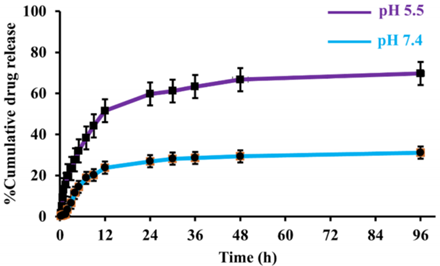
Figure 1. Release study of EVO from ENPs was performed in two different pH conditions (pH 7.4 and 5.5).
3. Cytotoxicity Assessment
- Procedure: The MTT assay evaluated cell viability in MDA-MB-231 and MCF-7 breast cancer cell lines after 24 and 48 hours of treatment with ENPs, free evodiamine, or blank nanoparticles.
- Result: ENPs decreased cell viability in a dose- and time-dependent manner, with lower IC50 values than free evodiamine.
- Finding: The enhanced cytotoxicity of ENPs may result from improved cellular uptake and sustained drug release.
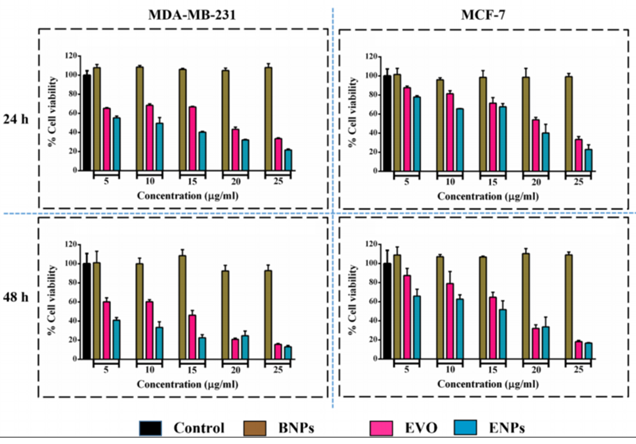
Figure 2. Cytotoxic efects of BNPs, pure EVO and ENPs (5, 10, 15, 20 and 25 µg/ml) against human breast cancer cells for 24 and 48 h.
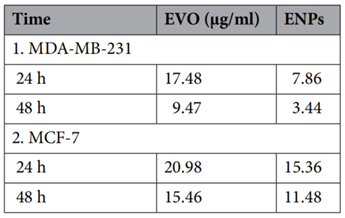
Table 1. IC50 values (µg/ml) of EVO and ENPs against MDA-MB-231 and MCF-7 cells.
4. Apoptosis Detection
- Procedure: Apoptosis was assessed using the AO-EtBr staining assay in treated cells.
- Result: ENPs-treated cells showed a higher proportion of apoptotic cells compared to those treated with free evodiamine.
- Finding: ENPs appear to induce apoptosis more effectively than free evodiamine.
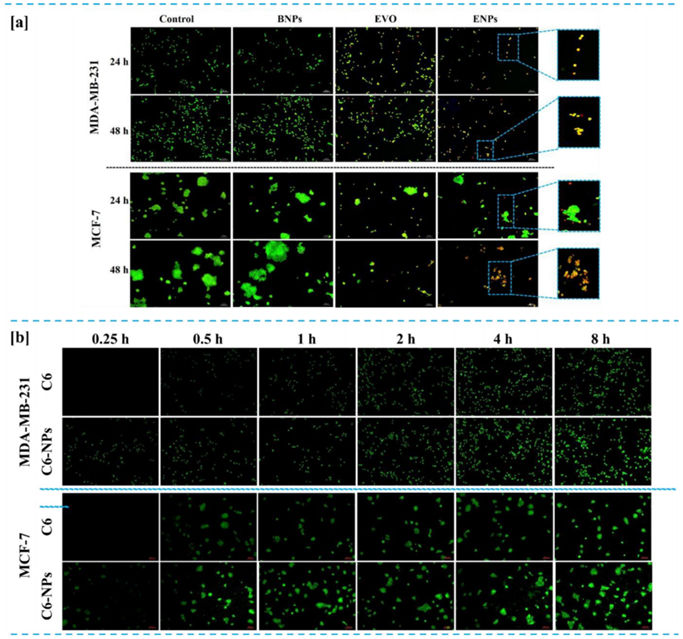
Figure 3. Detection of apoptosis by AO-EtBr staining assay.
5. Molecular Mechanism Studies
- Procedure: qRT-PCR and western blotting analyzed the expression of apoptosis-related genes and proteins.
- Result: ENPs-treated cells exhibited increased p53 and Bax expression and decreased Bcl-2 expression.
- Finding: These molecular changes suggest that ENPs trigger apoptosis via the p53 and Bax/Bcl-2 pathways.
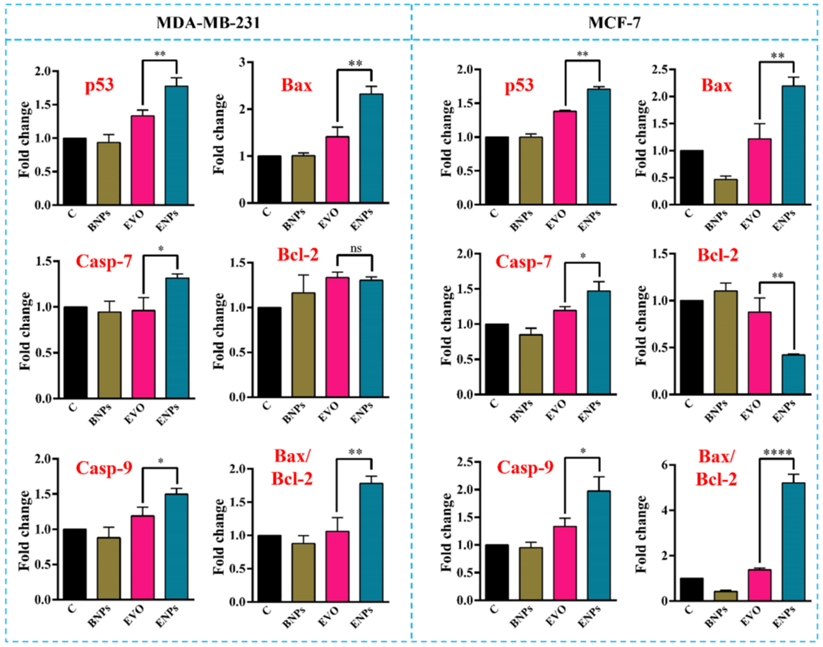
Figure 4. Quantitative gene expression analysis of p53, Caspase-7, Caspase-9, Bax, Bcl-2 and Bax/Bcl-2 ratio using real-time RT-PCR.
Additional analyses included dynamic light scattering (DLS), field emission scanning electron microscopy (FESEM), Fourier-transform infrared spectroscopy (FTIR), X-ray diffraction (XRD), differential scanning calorimetry (DSC), and thermogravimetric analysis (TGA). Biological effects were further studied through colony formation, cellular uptake, and cell cycle analysis using FACS.
Implications for Breast Cancer Therapy
The research indicates that evodiamine-loaded bovine serum albumin nanoparticles (ENPs) improve the anticancer efficacy of evodiamine against breast cancer cells. With an average size of 150 nm and an entrapment efficiency of 86%, the nanoparticles demonstrated sustained drug release over 96 hours. In laboratory experiments, ENPs reduced cancer cell viability, inhibited colony formation, and induced apoptosis more effectively than free evodiamine. Molecular analyses revealed that ENPs upregulate p53 and Bax while downregulating Bcl-2, supporting an apoptosis-mediated mechanism.
The incorporation of bovine serum albumin, a biocompatible protein, addresses the solubility and bioavailability constraints of evodiamine, presenting a feasible approach for enhancing drug delivery in breast cancer treatment. Although these results are promising, additional studies are required to validate the findings in clinical contexts. This work lays a groundwork for future development of improved breast cancer therapies.
Reference:
Solanki, Raghu, et al. “Enhancing apoptosis-mediated anticancer activity of evodiamine through protein-based nanoparticles in breast cancer cells.” Scientific Reports 14.1 (2024): 2595.
